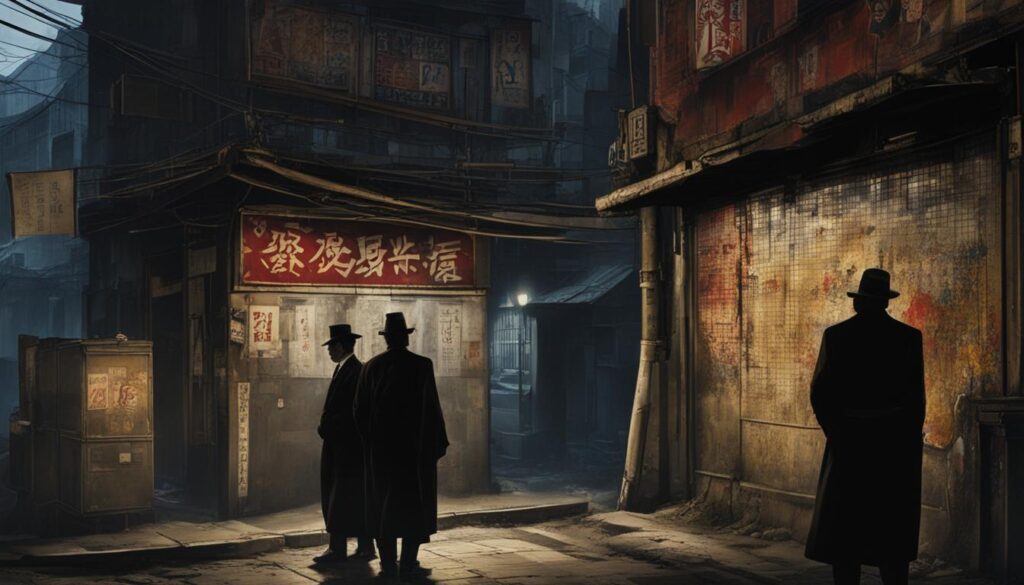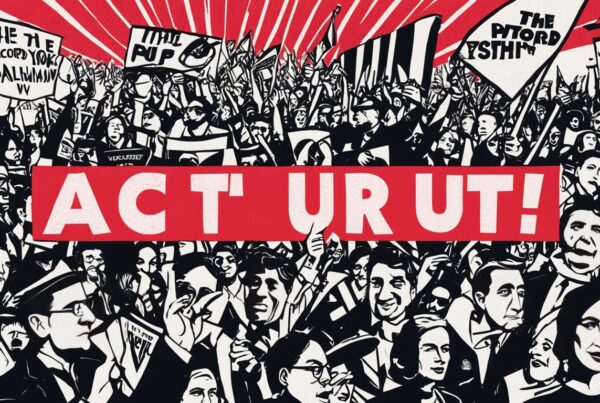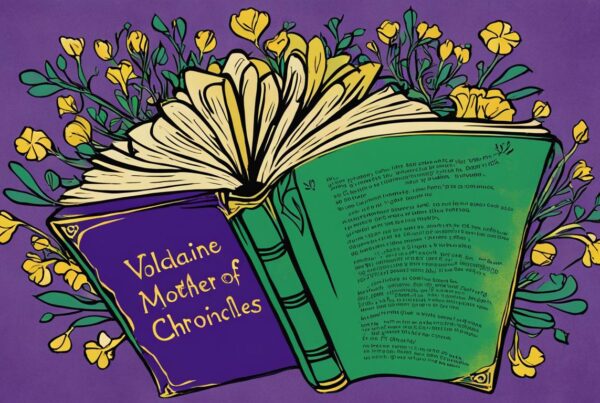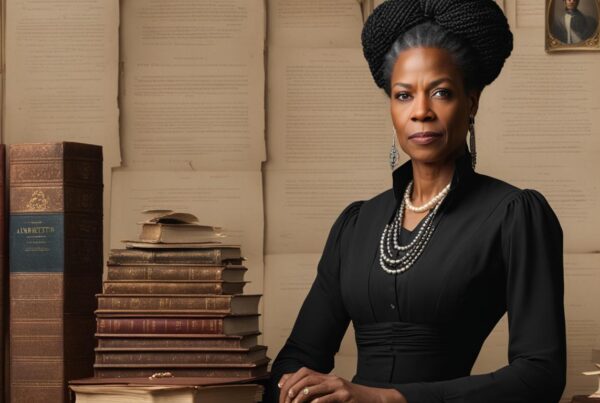If you’re looking for a fascinating exploration of the interplay between art and politics during the Cold War, have a listen to Louis Menand’s audiobook, “The Free World.” This audiobook review delves into Menand’s perspective on the Cold War culture and its impact on art and literature.
As an acclaimed author, Menand brings his unique background and expertise to the subject matter. His audiobook delves into the central plot and underlying themes, as well as explores the ways in which Cold War art movements and major literary works encapsulated the zeitgeist of the era. “The Free World” also highlights the intellectual discourse surrounding art and thought during the Cold War and examines the artistic resilience of expression and resistance.
This audiobook review also evaluates the narration performance and production quality of “The Free World,” providing a comprehensive analysis of the overall audiobook experience. At the same time, it draws parallels between the Cold War era and the present to unearth the lessons and insights to be gained from this turbulent period in history.
The Cold War Era: Politics and Culture
The Cold War era was marked by intense political and ideological tensions between the Western powers, led by the United States, and the Eastern bloc, dominated by the Soviet Union. The threat of nuclear war loomed over international relations, leading to a constant state of anxiety and uncertainty. At the same time, the cultural landscape of the time was shaped by the ever-evolving artistic expressions of the era.
The political tensions of the Cold War were reflected in both domestic and international affairs. In the U.S., the fear of communism led to widespread paranoia and a fervent anti-communist sentiment. This period was marked by historic events such as the Korean War, Cuban Missile Crisis and the Berlin Wall. The Soviet Union, meanwhile, maintained a strict regime of censorship and propaganda, controlling all aspects of the media and limiting artistic expressions that did not align with the state’s socialist ideals.
Cold War culture was also shaped by the emergence of various artistic movements. Abstract Expressionism, Pop Art, avant-garde theater, and the Beat Generation all emerged during this period, reflecting a newfound cultural freedom and experimentation. The tumultuous political climate thus gave way to a rich and varied artistic expression.
The Impact of Cold War Politics on Culture
The political tensions of the time had a profound impact on art and culture. The fear and uncertainty of international relations seeped into artwork, with many artists creating works that reflected the anxiety of living in a world on the brink of nuclear war. Political messages were often conveyed through art, as artists used their medium to express dissent or challenge prevailing ideals. Similarly, the propaganda machine of the Soviet Union led to a strong ideological influence on the culture of Eastern Europe.
The Cultural Significance of the Cold War Era
The impact of the Cold War era on the cultural landscape remains significant to this day. Not only did it inspire a multitude of artistic expressions, but it also fundamentally shaped the way we think about politics, ideology, and the power of the media. It remains a rich area for scholarly inquiry and cultural exploration.
Louis Menand: The Author and his Perspective
As a highly regarded American writer and critic, Louis Menand is renowned for his expertise in cultural and intellectual history. He is an accomplished professor, editor, and staff writer at The New Yorker, and his numerous accolades include the Pulitzer Prize for History and the National Book Critics Circle Award.
In his latest audiobook, “The Free World,” Menand offers a fresh perspective on the complex interplay between art and thought during the Cold War era. Drawing from his extensive research and expertise, he presents a nuanced account of this pivotal period in history, exploring the ideological and cultural tensions that shaped the sociopolitical landscape.
Menand’s unique viewpoint as a historian and cultural critic allows him to weave together a compelling narrative that spans multiple disciplines and schools of thought. He approaches his complex subject matter with a keen eye for detail and an engaging writing style that draws the reader in from the first page.
Furthermore, Menand’s passion for his subject matter is evident throughout the book, as he deftly balances historical analysis and cultural criticism with personal anecdotes and reflections. Through his expert storytelling and insightful analysis, he offers a vivid portrait of the artistic and intellectual movements that defined the Cold War era, providing readers with a deeper understanding of its lasting impact on contemporary society.
Unraveling the Threads: The Plot and Themes
The Free World by Louis Menand is a multidimensional commentary on the interplay between politics and art during the Cold War era. At its essence, the book explores the story of the young CIA officers who defected to Moscow in 1962 and the aftermath of their decision.
The narrative moves between different characters and events, portraying the complexities and contradictions of the era. Menand’s prose is elegant and insightful, providing a nuanced understanding of the societal forces at play.
Thematically, the book is rich and wide-ranging. At its core, it explores the tension between individualism and collectivism, and the role that art plays in this dichotomy. The novel depicts how art, literature, and thought can question assumptions and push boundaries, but also how they can be used as propaganda tools to reinforce conformity.
The Role of Art in Cold War Politics
The book portrays how politics and culture merged during the Cold War era, with governments using art to promote their ideologies and values. Menand’s exploration of the cultural Cold War highlights the importance of understanding the role of art in shaping political narratives, as well as the potential for artists and intellectuals to resist these narratives.
Overall, “The Free World” is a compelling novel that sheds light on the complex interplay between art and politics during the Cold War era. It is a reflection on the human cost of espionage, and a commentary on the power of art to shape and reflect the world we live in.
Cold War Art Movements: Influences and Impact
The Cold War era was marked by a diverse and dynamic range of art movements that emerged across the globe. These movements were shaped by the political and cultural landscape of the time and played a significant role in shaping the art world as we know it today. From abstract expressionism to pop art, these movements were diverse in style but shared a common thread of challenging norms and pushing boundaries.
One of the most prominent art movements of the Cold War era was abstract expressionism. This movement originated in the United States and was characterized by bold colors and brushstrokes that conveyed emotion and energy. Abstract expressionism was highly influential and set the tone for future movements such as color field painting and minimalism.
Another movement that emerged during the Cold War era was pop art. This movement was a response to the consumer culture of the time and sought to elevate everyday objects and images into works of art. Pop art was characterized by bright colors, bold graphics, and a sense of playfulness. Artists such as Andy Warhol and Roy Lichtenstein were at the forefront of this movement and their works continue to be celebrated today.
The influence of these and other Cold War art movements extends far beyond the era in which they emerged. These movements challenged traditional notions of art and created new forms of expression that continue to resonate with audiences today. The impact of these movements can be seen not only in the art world but also in popular culture and design.
Through their influences and impact, Cold War art movements have left an indelible mark on the history of art. Their legacy continues to inspire artists today and serves as a powerful reminder of the enduring power of artistic expression.
Intellectual Discourse: Philosophies and Provocations
During the Cold War period, intellectual discourse played a crucial role in shaping artistic expression. Philosophers, critics, and artists engaged in thought-provoking debates on the relationship between art and politics, the role of culture, and the boundaries of creativity. These discussions were often grounded in diverse philosophical schools of thought, from existentialism to Marxism, and reflected the multifaceted tensions of the time.
One of the key themes that emerged from this discourse was the idea that art was not merely an aesthetic form of expression but could also serve as a powerful political tool. Many artists sought to challenge the dominant narratives of the time by using their work to challenge the status quo. This often led to provocative and controversial pieces that sought to break down the distinction between high and low art and blur the lines between form and content.
The debates and discussions that emerged from this intellectual discourse had a profound impact on the world of art and culture, serving as a catalyst for experimentation and innovation. The art movements that emerged during this period, such as abstract expressionism and pop art, reflected the philosophical underpinnings of the time and continue to inspire and influence artists today.
Literary Exploration: Cold War Authors and their Works
The Cold War era witnessed a surge of literary works that reflected the ideological, political, and social tensions of the time. From dystopian fiction to espionage thrillers, Cold War literature encompassed a broad range of genres and styles, offering a window into the zeitgeist of the era. Here are some of the prominent Cold War authors and their notable works.
| Author | Notable Works |
|---|---|
| John le Carré | The Spy Who Came in from the Cold, Tinker Tailor Soldier Spy, The Constant Gardener |
| Raymond Chandler | The Long Goodbye, The Lady in the Lake, Farewell, My Lovely |
| Joseph Heller | Catch-22, Something Happened, Good as Gold |
| Arthur Miller | The Crucible, Death of a Salesman, A View from the Bridge |
| Thomas Pynchon | The Crying of Lot 49, Gravity’s Rainbow, Mason & Dixon |
Each of these writers brought their unique perspectives and styles to the literary world, intertwining their works with the dominant themes of the Cold War. From the disillusionment with authority to the fear of nuclear destruction, their works provided a nuanced portrayal of the anxieties and aspirations of the time.
Cold War Espionage Thrillers
One of the most significant genres that emerged during the Cold War was that of espionage thrillers. Writers like John le Carré and Ian Fleming, the creator of James Bond, became household names, crafting unforgettable characters and intricate plots that kept readers on the edge of their seats.
“I don’t suppose governments consult morality in their foreign policy. And, after all, if we only sat back and waited for the lesser evil to turn up, it might rally very comfortably with the greater.”
– John le Carré, The Spy Who Came in from the Cold
With the proliferation of spy networks and intelligence agencies during the Cold War, the public and the literary world became fascinated by the shadowy world of espionage. The genre remains popular to this day, with authors like Daniel Silva and Charles Cumming carrying on the legacy of Cold War espionage thrillers.
The Legacy of Cold War Literature
The works of Cold War authors continue to captivate readers and scholars alike, offering valuable insights into the cultural, political, and social climate of the time. They also serve as a reminder of the power of literature to both reflect and shape our worldviews.
As Louis Menand points out in “The Free World,” literature played a crucial role in the Cold War era, both as a reflection of the anxieties and aspirations of the time and as a tool for cultural diplomacy. The legacy of Cold War literature extends far beyond the era itself, demonstrating the enduring power of storytelling and the human imagination.
Artistic Resilience: Expression and Resistance
During the Cold War era, artists faced significant challenges in expressing their dissent in an increasingly politicized world. However, as seen in Louis Menand’s “The Free World,” many artists showed remarkable artistic resilience in challenging cultural norms and resisting political forces.
Artistic expression became a powerful tool for resistance, with many artists turning to subversive and unconventional forms to challenge societal norms. For example, the Beat poets, such as Allen Ginsberg and Jack Kerouac, used their writing to express their disillusionment with mainstream culture and promote individualism.
Similarly, the abstract expressionist movement, which included artists such as Jackson Pollock and Willem de Kooning, radically challenged traditional art forms and became a symbol of artistic resistance against the conservative cultural climate.
“The role of the artist, then, precisely, is to illuminate that darkness, blaze roads through that vast forest, so that we will not, in all our doing, lose sight of its purpose, which is, after all, to make the world a more human dwelling place.”
– James Baldwin, “The Creative Process,” 1962
Through their works, artists showed remarkable resilience and determination in the face of political oppression, using their artistic expressions as a way to inspire change and promote freedom of thought. Their legacy continues to inspire contemporary artists, proving that art can be a powerful tool for resistance and social change.
Cultural Impact: Cold War’s Lasting Influence
The Cold War era may have ended decades ago, but its cultural impact continues to reverberate across contemporary society. From art and music to literature and politics, the Cold War left an indelible imprint on our cultural consciousness.
The influence of the Cold War can be seen in the way artists and creators approached their craft, incorporating imagery, themes, and subtext that reflected the political tensions of the time. Even today, audiences are drawn to works that embody the spirit of the Cold War, whether it be through films set in the era or books that explore its complexities.
One notable example of this enduring influence can be seen in the resurgence of spy and espionage thrillers, which were popularized during the Cold War and continue to captivate audiences today. These stories often grapple with themes of mistrust, deception, and moral ambiguity, all of which were hallmarks of the era.
Furthermore, the legacy of the Cold War can also be felt in the way nations interact with one another on the global stage. The tensions and rivalries that defined the era continue to shape diplomatic relationships and international politics, highlighting the long-lasting impact of this pivotal moment in history.
Overall, the cultural impact of the Cold War is a testament to its lasting influence on society as a whole. By examining the art, literature, and political thought of the era, we can gain a deeper understanding of the time and its ongoing significance in shaping our world today.
Cold War Art Movements
| Art Movement | Influences | Impact |
|---|---|---|
| Pop Art | Consumer culture, mass media | Critiqued the commodification of society |
| Abstract Expressionism | Existentialism, Zen Buddhism | Emphasized subjective emotional experience in art |
| Op Art | Theory of optics, Gestalt psychology | Explored illusions and visual perception |
| Minimalism | Industrial materials, geometric abstraction | Simplified forms and emphasized the materiality of art |
“The Cold War era undoubtedly left a significant imprint on popular culture and artistic expression. By exploring the complex relationship between politics and art during this time, we can gain a deeper appreciation for the ways in which cultural movements and creative expression shape our understanding of the world around us.”
Audiobook Experience: Narration and Production Quality
As a critical aspect of the overall experience, the narration performance and production quality of an audiobook can make or break its success. In the case of “The Free World,” narrator Michael Kramer delivers a captivating performance that serves to enhance the already-compelling material. His smooth and expressive delivery keeps the listener engaged throughout, while his skillful use of intonation and tonality brings the characters and their rich emotions to life.
On the front of production quality, “The Free World” audiobook delivers a flawless listening experience. From the technical standpoint, the audio quality is excellent, free from any distortions, glitches, or background noise. The pacing, timing, and overall production value are high, supporting the book’s intriguing and thought-provoking narrative.
The smooth narration and high-quality production value make for an immersive audiobook experience that is sure to delight fans of Louis Menand’s work and anyone interested in discovering the interplay between art and thought during the Cold War era.
Relevance Today: Lessons from the Past
Although the Cold War era may seem like a distant memory, its impact on contemporary culture cannot be understated. The tensions and ideologies that defined the time continue to reverberate in society today, with new political and cultural fault lines emerging.
“The past is never dead. It’s not even past.”
– William Faulkner
Exploring the art and thought of the Cold War era through works like “The Free World” provides valuable lessons and insights. We can learn from the resilience of artists who used their mediums to express dissent and resistance, even in the face of repressive political climates. We can also gain a deeper understanding of the complexities of political ideologies and cultural movements, and how they shape the society we live in today.
Acknowledging the relevance of the past is key to navigating the challenges of the present and shaping the direction of the future.

Cold War Lessons for Today’s Leaders
| Lessons from the Cold War Era | Application Today | |
|---|---|---|
| 1 | Contested ideologies can be destabilizing and lead to conflict. | In an era of growing polarization, leaders must seek to bridge divides and promote understanding. |
| 2 | Artistic expression can serve as a powerful means of dissent and resistance. | In an age of social media and citizen journalism, artists and activists have a wider platform for their message. |
| 3 | International cooperation is critical to addressing global challenges. | Leaders must collaborate across borders to address issues such as climate change and public health. |
| 4 | The military-industrial complex can have unintended consequences and undermine democracy. | Leaders must be vigilant in protecting the integrity of democratic institutions and avoiding the entrenchment of vested interests. |
These are just a few examples of the enduring lessons that the Cold War era has to offer. By studying and reflecting on the past, we can better equip ourselves for the challenges of the future.
Conclusion
Overall, Louis Menand’s “The Free World” audiobook provides a fascinating exploration of the interplay between art and thought during the Cold War era. By delving into the political and cultural landscape of the time, Menand sheds light on the tensions, ideologies, and artistic expressions that emerged during this turbulent period in history.
Through a comprehensive analysis of the central plot and underlying themes in “The Free World,” Menand emphasizes the enduring influence of Cold War art movements on contemporary culture. He also highlights the resilience of artists in using their mediums to express dissent, challenge norms, and resist the political climate of the time.
The audiobook experience for “The Free World” is of high quality, with excellent narration and production quality that enhance the overall impact of Menand’s work.
As we reflect on the lessons and insights we can gain from the Cold War era, we come to recognize its continued relevance in contemporary society. Through Menand’s unique perspective, we are reminded of the interconnectedness of art and thought and the enduring impact of cultural movements on society.
“The Free World” is a must-read for anyone interested in exploring the intersection of politics, culture, and the arts during the Cold War era. With its informative and persuasive content, it is sure to captivate both history enthusiasts and those new to the topic alike.



